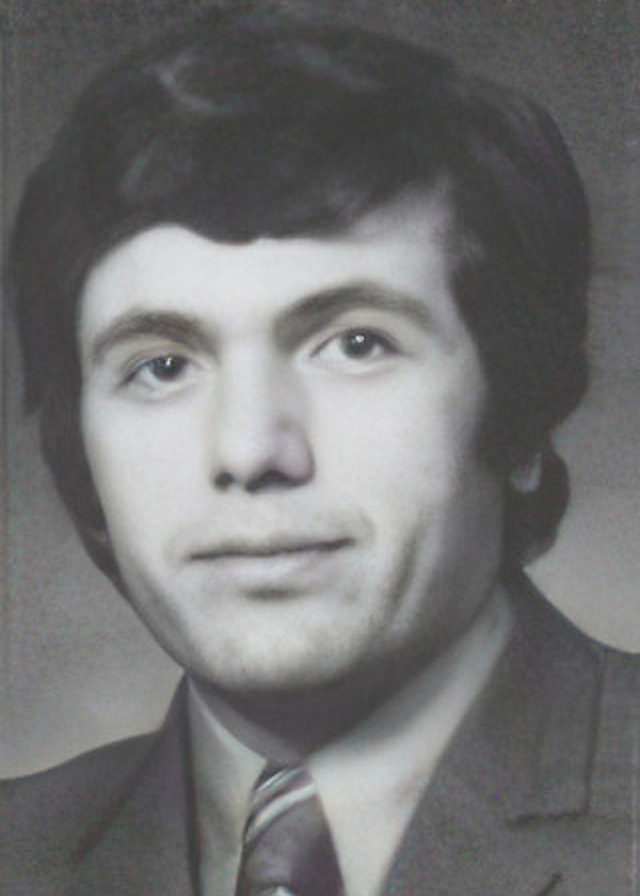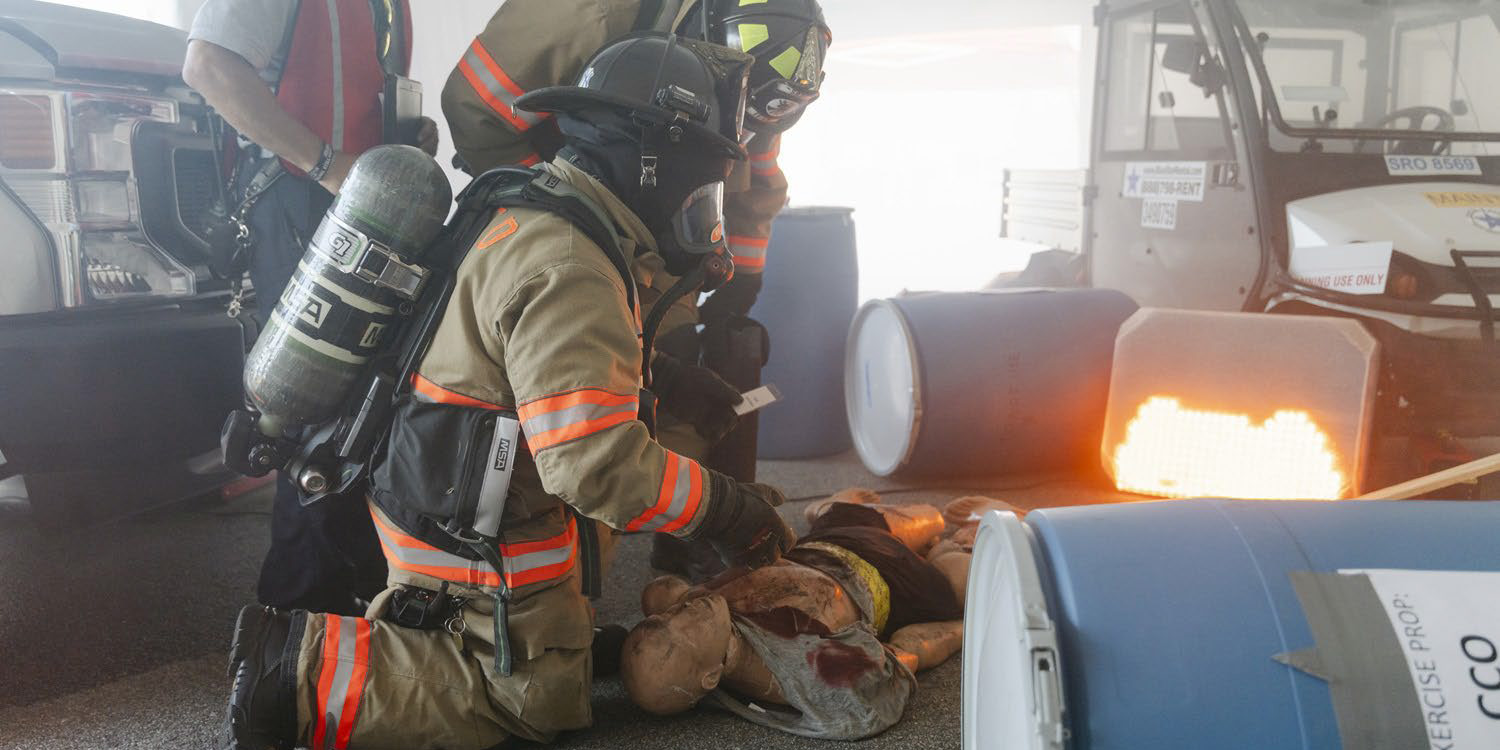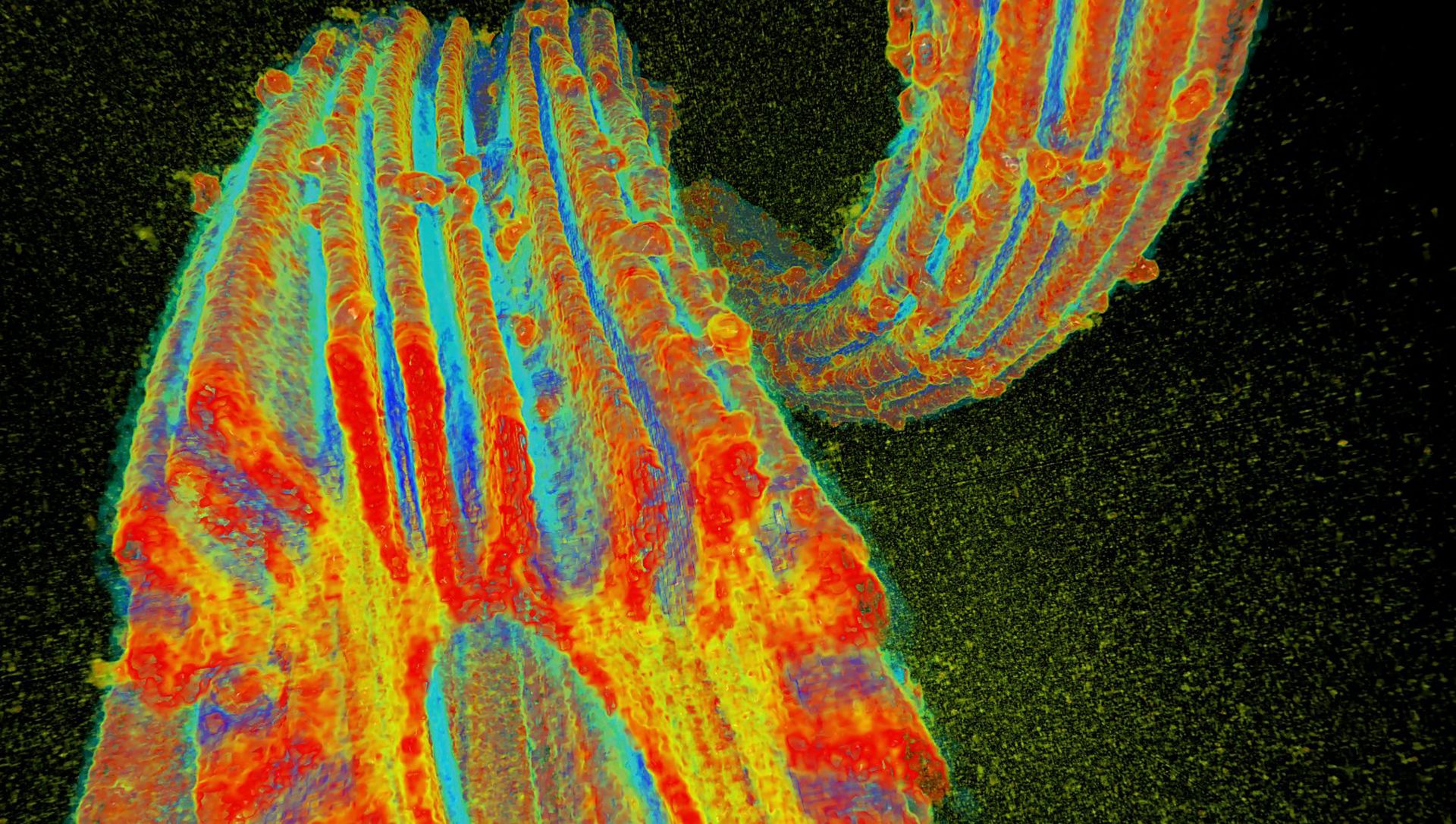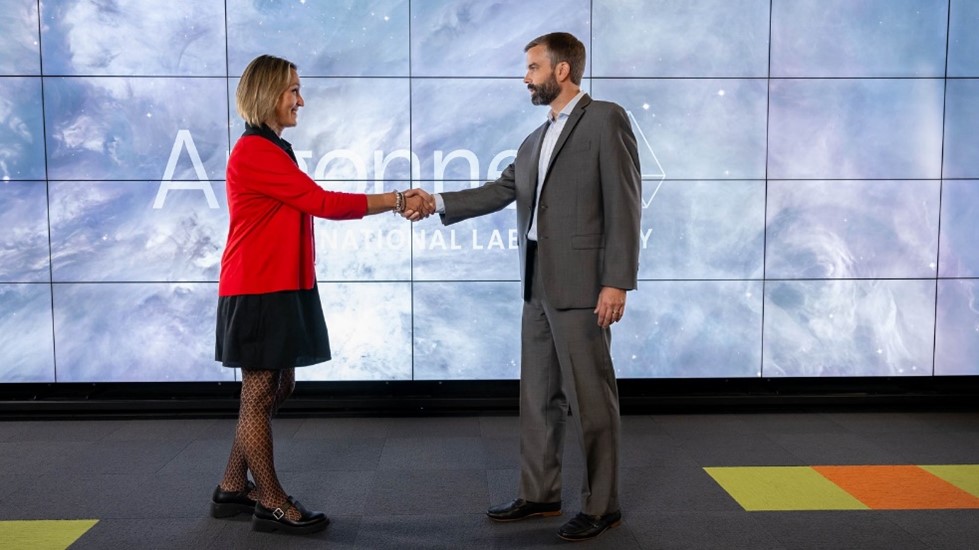AI-powered imaging from Argonne reveals hidden flaws in stainless steel and could boost safety in critical industries
Advanced metal components produced through additive manufacturing can highlight the potential for cutting-edge technologies like AI-enhanced defect detection to ensure their reliability. (Photo: Shutterstock/MarinaGrigorivna)
Imagine you’re constructing a bridge or designing an airplane, and everything appears flawless on the outside. However, microscopic flaws beneath the surface could weaken the entire structure over time.
These hidden defects can be difficult to detect with traditional inspection methods, but a new technology developed by scientists at the U.S. Department of Energy’s Argonne National Laboratory is changing that. Using artificial intelligence and advanced imaging techniques, researchers have developed a method to reveal these tiny flaws before they become critical problems.
Argonne director Paul Kearns, undersecretary of state for arms control and international security Bonnie Jenkins, EPRI chief nuclear strategy officer Neil Wilmshurst, and DOE acting assistant secretary for nuclear energy Michael Goff spoke at COP29 in Baku, Azerbaijan. (Photo: PNNL/Nazar Kholod)
Argonne National Laboratory will play a leading role in planning and rebuilding a nuclear-generated clean energy infrastructure for postwar Ukraine as part of the lab’s focus on developing small modular reactor applications to help countries meet energy security goals. The latest plans, described in a November 19 article, were announced on November 16 at COP29 in Baku, Azerbaijan.

Peters
Mark Peters will become president and chief executive officer of MITRE, effective September 3, 2024. He will succeed Jason Providakes, who previously announced his intention to retire after 37 years with the not-for-profit research and development company, including seven years as president and CEO.
Peters is a recognized expert in nuclear fuel cycle technologies, nuclear waste management, and national security, with more than 25 years of leadership and scientific discovery for federally funded R&D centers (FFRDCs). He currently serves as executive vice president, laboratory management and operations, at Battelle Memorial Institute, which, with other strategic partners, operates eight FFRDCs for the federal government, with responsibility for governance and oversight of the Department of Energy and Department of Homeland Security national laboratories.
SRS firefighters responded to a staged scene outside of K Area’s Criticality Control Overpack pad. The firefighters followed an Incident Action Plan to maximize the safety of responders and role-playing victims for effective extraction. (Photo: DOE/SRNS)
Earlier this month, nearly 250 personnel at the Department of Energy’s Savannah River Site in South Carolina took part in an annual exercise to test preparedness for a radiological release and contamination emergency.
The workforce development panel, from left, moderator Amanda Bachmann of Argonne, Lori Brady of NEI, Joseph Stainback of Roane State, Ilana Bowen of Constellation, and Nicole Hughes of Thor Thomas. (Source: ANS)
Industry leaders met this week to discuss the importance of shoring up nontraditional workforce pipelines to support growth in nuclear energy generation in the coming decades.
An executive panel discussed this issue last week at the American Nuclear Society’s 2024 Annual Conference in Las Vegas The industry is working to target community colleges, trade schools, vocational programs, nontraditional students, and a wider variety of educational backgrounds.
A screenshot from a DOE video showing the eight Ukrainian students from the department’s internship program at Argonne National Laboratory, along with one of their tour guides (second from left). (Image: DOE)
Eight graduate students from Ukrainian universities have completed a two-year Department of Energy internship program that included a visit to Argonne National Laboratory.

. . . and today.

Halil Avci in 1975 . . .
We welcome ANS members who have careered in the community to submit their own Nuclear Legacy stories, so that the personal history of nuclear power can be captured. For information on submitting your stories, contact nucnews@ans.org.
For me, going into nuclear engineering was an adventure. In 1968, as a 17-year-old in a small village in western Turkey, I took a government exam designed to select students to send abroad for college. I had to pick a major and a country before the exam, so I picked nuclear engineering and America because they both seemed exciting and full of potential. I came to the United States with the intent to obtain my bachelor’s degree and return to Turkey without delay, because I was told that I was needed to work on the construction of Turkey’s first nuclear power plant starting in 1974. That nuclear plant project did not materialize as planned, nor did I return to Turkey as expected.
The Argonne-West laboratory site before it was merged with the Idaho National Engineering and Environmental Laboratory into today’s Idaho National Laboratory. The silver dome in the photo is Experimental Breeder Reactor-II, the silver structure with the flat top and sloping sides is the Zero Power Plutonium Reactor, and the brown boxlike structure behind ZPPR is the Hot Fuel Examination Facility. (Photo: Argonne National Laboratory)
Idaho’s nuclear energy history is deep and rich. The National Reactor Testing Station (NRTS) began its history as an artillery testing range in the 1940s.1 Following World War II, Walter Zinn, Argonne National Laboratory’s founding director and Manhattan Project Chicago Pile-1 project manager, proposed to the Atomic Energy Commission that a remote location be found for building test reactors. In 1949, he and Roger S. Warner, AEC’s director of engineering,2 developed a list of potential sites from which the NRTS was selected. Over the decades, quite a few companies and AEC national laboratories built 52 experimental and test reactors at the NRTS, including 14 by Argonne.3 (For a brief AEC video on the NRTS, see youtube.com/watch?v=C458NsH08TI.)
Researchers have been working frantically to develop an array of materials and fibers to economically extract uranium from seawater—and they have succeeded. PNNL scientists exposed this special uranium-sorbing fiber developed at ORNL to Pseudomonas fluorescens and used the Advanced Photon Source at Argonne National Laboratory to create a 3-D X-ray microtomograph to determine microstructure and the effects of interactions with organisms and seawater. (Image: PNNL)
America, Japan, and China are racing to be the first nation to make nuclear energy completely renewable. The hurdle is making it economical to extract uranium from seawater, because the amount of uranium in seawater is truly inexhaustible.
While America had been in the lead with technological breakthroughs from the Department of Energy’s Pacific Northwest and Oak Ridge National Laboratories, researchers at Northeast Normal University in China have sprung ahead. But these breakthroughs from both countries have brought the removal of uranium from seawater within economic reach. The only question is when will the source of uranium for our nuclear power plants change from mined ore to seawater extraction?
Argonne director Paul Kearns delivers the plenary lecture on the first day of the 2023 Atoms for Humanity symposium. (Photo: Purdue NE/CHE)
The roles of nuclear energy as a clean energy source and in space exploration were highlighted at the recent Atoms for Humanity symposium, held October 25–26, 2023. The symposium, which was organized by Purdue’s Center for Intelligent Energy Systems (CiENS) and hosted by the university’s School of Nuclear Engineering, was held on the West Lafayette, Ind., campus in Eliza Fowler Hall.
December 15, 2023, 4:56PMNuclear NewsDonna Kemp Spangler and Joel Hiller BWXT’s microreactor components would be designed to be transported directly from the factory to the deployment site. (Image: BWXT)
“The tools of the academic designer are a piece of paper and a pencil with an eraser. If a mistake is made, it can always be erased and changed. If the practical-reactor designer errs, he wears the mistake around his neck; it cannot be erased. Everyone sees it.”
Many in the nuclear community are familiar with this sentiment from Admiral Rickover. A generation of stagnation in the industry has underscored the truth of his words. But as economies around the world put a price on carbon emissions, there’s a renewed sense of urgency to deploy clean energy technologies. This shifts the global balance of economic competitiveness, and it’s clear that the best path forward for nuclear requires combining the agility of private innovators with the technology and capabilities of national laboratories.
Concept art of an ARC-100 plant. (Image: ARC)
Small modular reactor developer ARC Clean Technology, Canadian utility New Brunswick Power, and nuclear plant operator Korea Hydro & Nuclear Power have signed a memorandum of understanding to explore opportunities for commercializing ARC technology in Canada, South Korea, and the United States, as well as in other regions where KHNP has business operations.

Hussein Khalil
Within the next decade, it is expected that the first round of advanced reactor (AR) demonstration units will be successfully started up and operated, with additional industry-led nuclear energy initiatives progressing toward demonstration. These AR prototypes will be first-of-a-kind systems incorporating significant technological advances. Attracting the required investment for construction and operation will require persistent efforts to improve performance, reduce costs, attract an investor/-customer base, and establish the supply chain and workforce needed to meet this emerging demand.
Public-private partnerships focused on technology and design advancements will likely be needed through at least 2050. These partnerships will require the research community—and the national labs in particular—to play a key role in developing technical solutions for economically competitive systems and helping address other challenges to sustained and expanded use of nuclear energy. These challenges include managing used nuclear fuel, minimizing nuclear security and proliferation risks, and pursuing international markets.
Joint efforts of Argonne and private industry further nuclear reactor developments
Partnerships between the nuclear industry and national laboratories are making overall codes more robust and capable. (Photo: Argonne)
The development of modern nuclear reactor technologies relies heavily on complex software codes and computer simulations to support the design, construction, and testing of physical hardware systems. These tools allow for rigorous testing of theory and thorough verification of design under various use or transient power scenarios.
Experimental Breeder Reactor-II (Photo: ANL)
If you head west out of Idaho Falls on U.S. Highway 20 and make your way across the Snake River Plain, it won’t be long before you’ll notice a silver dome in the distance to the north. One of the most recognizable structures in the history of nuclear energy, Experimental Breeder Reactor-II stands out from the desert landscape. The 890-square-mile site on which EBR-II is located is the former National Reactor Testing Station, now known as Idaho National Laboratory.

Shvyd’ko
A major step toward the creation of the most precise atomic clock ever—with an accuracy of one second in 300 billion years—was recently reported in Nature by an international team of researchers working at the European X-Ray Free-Electron Laser (XFEL) facility. The researchers, led by senior physicist Yuri Shvyd’ko of Argonne National Laboratory, created a pulse generator based on the element scandium that demonstrated an extremely narrow resonance frequency capable of maintaining unprecedented time accuracy.
Atomic and nuclear clocks: In atomic clocks, the electrons in the atomic shells of certain elements—most commonly cesium—are raised to higher energy levels with microwave radiation. The microwave frequency is tuned to maximize the radiation absorption within a particular resonance range.
Reuters broke an “exclusive” story on January 6 that, “according to Internet records reviewed by Reuters and five cyber security experts,” a Russian hacking team known as Cold River targeted three Department of Energy laboratories—Argonne, Brookhaven, and Lawrence Livermore—with a phishing scheme in the summer of 2022.
A figure from the “Multistep Coulomb excitation of 64Ni” that shows the time-of-flight difference between the projectile and target recoils as a function of scattering angle measured with the CHICO2 detector. A clear separation between the Ni-64 (bottom) and Pb-208 (top) ions is observed. (Credit: Physical Review C/American Physical Society)
A study published recently in the American Physical Society journal Physical Review C reveals new findings about the strong nuclear force, the mysterious fundamental force that holds together the protons and neutrons of the atomic nucleus. Experiments conducted at Argonne National Laboratory have shown how the round, heavy nuclei of the nickel-64 isotope (containing 28 protons and 36 neutrons, making it the heaviest stable Ni isotope) changed into one of two shapes—either like a doorknob or a football—depending on the amount of energy exerted on it. A summary of the research on the Phys.org website compares the nuclei shape change to popcorn kernels changing shape when heated in a microwave.
On December 2, 1942, a group of 49 scientists led by Enrico Fermi created the world’s first controlled, self-sustaining nuclear chain reaction underneath the University of Chicago’s Stagg Field football stadium. Some of those present went on to found Argonne National Laboratory. (Image: Argonne)
At a moment of global crisis, in a windowless squash court below the football stadium bleachers at the University of Chicago, a group of scientists changed the world forever.
On December 2, 1942, a team of researchers led by Enrico Fermi, an Italian refugee, successfully achieved the world’s first human-created, self-sustaining nuclear chain reaction. Racing to beat Nazi Germany to the creation of an atomic weapon, the team of researchers, working as part of the Manhattan Project, split uranium atoms contained within a large graphite pile—Chicago Pile-1, the first nuclear reactor ever built.
On the road to achieving net-zero by midcentury, low- or no-carbon energy sources that slash carbon dioxide emissions are critical weapons. Nevertheless, the role of nuclear energy—the single largest source of carbon-free electricity—remains uncertain.
Nuclear energy, which provides 20 percent of the electricity in the United States, has been a constant, reliable, carbon-free source for nearly 50 years. But our fleet of nuclear reactors is aging, with more than half of the 92 operating reactors across 29 states at or over 40 years old—the length of the original operating licenses issued to the power plants. While some reactors have been retired prematurely, there are two options for those that remain: retire them or renew their license.




















